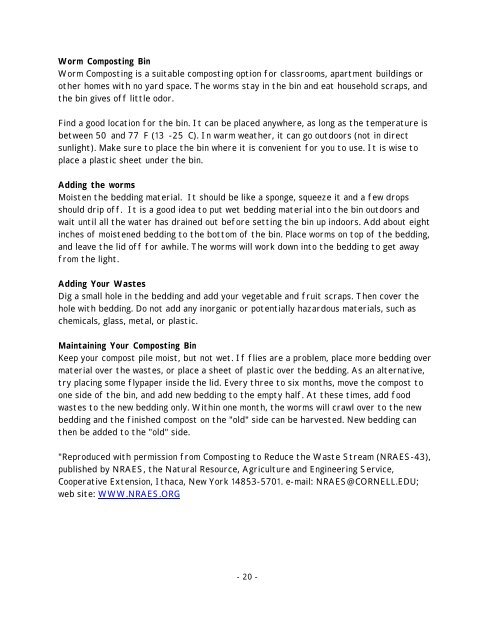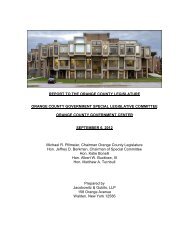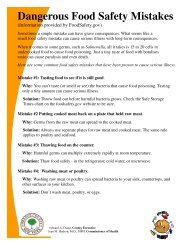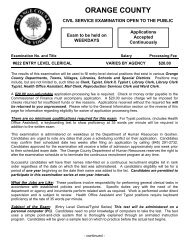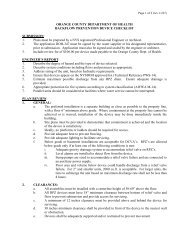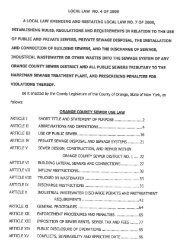A School Waste, Reduction, Reuse, Recycling, Composting & Buy ...
A School Waste, Reduction, Reuse, Recycling, Composting & Buy ...
A School Waste, Reduction, Reuse, Recycling, Composting & Buy ...
Create successful ePaper yourself
Turn your PDF publications into a flip-book with our unique Google optimized e-Paper software.
Worm <strong>Composting</strong> Bin<br />
Worm <strong>Composting</strong> is a suitable composting option for classrooms, apartment buildings or<br />
other homes with no yard space. The worms stay in the bin and eat household scraps, and<br />
the bin gives off little odor.<br />
Find a good location for the bin. It can be placed anywhere, as long as the temperature is<br />
between 50 and 77 F (13 -25 C). In warm weather, it can go outdoors (not in direct<br />
sunlight). Make sure to place the bin where it is convenient for you to use. It is wise to<br />
place a plastic sheet under the bin.<br />
Adding the worms<br />
Moisten the bedding material. It should be like a sponge, squeeze it and a few drops<br />
should drip off. It is a good idea to put wet bedding material into the bin outdoors and<br />
wait until all the water has drained out before setting the bin up indoors. Add about eight<br />
inches of moistened bedding to the bottom of the bin. Place worms on top of the bedding,<br />
and leave the lid off for awhile. The worms will work down into the bedding to get away<br />
from the light.<br />
Adding Your <strong>Waste</strong>s<br />
Dig a small hole in the bedding and add your vegetable and fruit scraps. Then cover the<br />
hole with bedding. Do not add any inorganic or potentially hazardous materials, such as<br />
chemicals, glass, metal, or plastic.<br />
Maintaining Your <strong>Composting</strong> Bin<br />
Keep your compost pile moist, but not wet. If flies are a problem, place more bedding over<br />
material over the wastes, or place a sheet of plastic over the bedding. As an alternative,<br />
try placing some flypaper inside the lid. Every three to six months, move the compost to<br />
one side of the bin, and add new bedding to the empty half. At these times, add food<br />
wastes to the new bedding only. Within one month, the worms will crawl over to the new<br />
bedding and the finished compost on the "old" side can be harvested. New bedding can<br />
then be added to the "old" side.<br />
"Reproduced with permission from <strong>Composting</strong> to Reduce the <strong>Waste</strong> Stream (NRAES-43),<br />
published by NRAES, the Natural Resource, Agriculture and Engineering Service,<br />
Cooperative Extension, Ithaca, New York 14853-5701. e-mail: NRAES@CORNELL.EDU;<br />
web site: WWW.NRAES.ORG<br />
- 20 -


